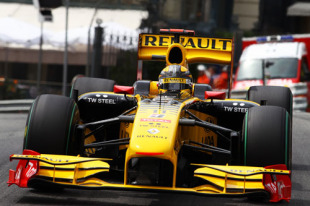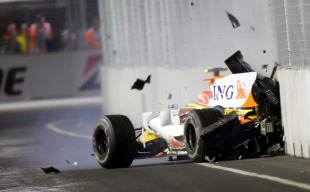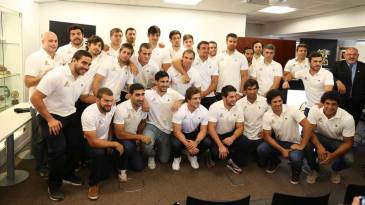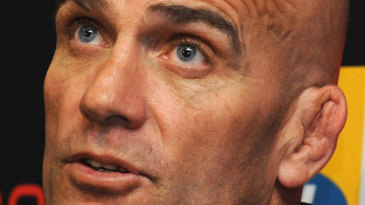- Formula Money
Renault's formula for survival

- News:
-
Renault plays down financial concerns
- News:
-
'Uphill struggle' to beat Mercedes - Boullier
- News:
-
F1 costs 'more than expected' - Lopez
- News:
-
Renault sells but stays in Formula One
- Drivers:
- Robert Kubica
- |
- Vitaly Petrov
- Teams:
- Renault
Saying that Renault's chances of survival in Formula One looked bleak this time last year is something of an understatement. Despite a glittering history, with two world championships under its belt, Renault's F1 team seemed set to crash out of the sport after a series of severe breakdowns.
The setbacks began in August last year when the team's boss Flavio Briatore faced accusations that he had rigged the result of the 2008 Singapore Grand Prix by ordering his driver Nelson Piquet junior to crash. In the wake of the scandal Briatore left the team followed by two-time world champion Fernando Alonso. Then there was an exodus of sponsors including Spanish insurance company Mutua Madrilena, Pepe Jeans and Dutch bank ING which alone was believed to be paying $65m annually. The team finished the season in eighth place - its worst ranking since the car manufacturer bought the outfit from Benetton in 2000.
Its fortunes started to turn round when Renault sold a 75% stake in the team in December last year to a group led by Luxembourg-based businessman Gerard Lopez, who was one of the early investors in the Skype internet phone service. Although the team was against the ropes at the time, Renault was savvy enough to know that the situation could soon change and it wanted to ensure that it would share in any glory.
Still fresh in Renault's minds was the example of Honda which got no exposure through the success of Brawn GP in 2009 despite the team being funded largely with its money. Accordingly Renault kept a stake in its team, gets branding on the car and continues to supply its 2.4 litre V8 engines at an annual cost of $60m according to F1's industry monitor Formula Money. However this alone wasn't enough to get the team onto the grid this year.

To compound its F1 woes in 2009, the car manufacturer made a net loss in its main business of $4.2bn and so providing more cash in return for on-car branding was not an option. Instead Renault came up with the innovative solution of giving the team a $27m loan in a deal equivalent in nature to a mortgage on a house. Just as a bank can repossess a house owned by someone who defaults on mortgage repayments to it, Renault secured its loan on the team's F1 grid slot, its land in Oxfordshire and its assets which had a value of $51.5m at the end of 2008.
The loan was given to the team in February and it was a no-brainer for the management of the car manufacturer. Under this kind of agreement the lender either gets its money back or it gets assets which can then be sold to raise it. In contrast, money given in return for on-car branding has a non-tangible return so the best a lender can do is cross its fingers and hope that the exposure on television will cover the outlay.

In July it came to light that the team had asked F1's boss Bernie Ecclestone for advance payment of the prize money it is due to receive at the end of the year. He later revealed that he "never gave them the money. And they got over the crisis so everything is fine." Its fuel was another shrewd loan.
On September 15 Renault released its security over the team's assets and land, and 19 days later a new loan from Lithuanian bank AB Snoras was secured on them. It isn't clear how long the team has to repay the loan, or if it bears interest, but the concept behind it is the same as the loan given by Renault - if it isn't repaid, then the Lithuanian bank effectively gets control of the team.
However, it doesn't seem likely that this will happen given its rising fortunes on-track which should ultimately translate into increased sponsorship. The team looks set to beat its dismal eighth place finish in 2009 and currently lies fifth after Sunday's Japanese Grand Prix with three races remaining before the end of the season.
Renault's Polish driver Robert Kubica and his Russian team-mate Vitaly Petrov haven't just boosted the team's success in the races. Their nationalities have also made it hugely popular in eastern Europe and it even embarked on a dedicated roadshow to Poland in July. This high level of recognition in markets close to its home is sure to have attracted Snoras and its relationship with Renault began in August when it became one of the team's sponsors. The bank has prominent logos on the sides of its cars and it certainly puts it on a world stage.

The most important purpose served by the loans is that they enable the team to tick over without additional investment from its owners. True, the repayments may make it harder for the team to turn a profit but this doesn't bother Lopez. He has created a business programme which connects potential sponsors with the team and then helps maximise their return by putting them in touch with the VIPs at the races and those within Renault or Lopez' business empire.
"It will connect one of our companies with a potential sponsor. One of our companies will provide a technology to that potential sponsor; in exchange that potential sponsor will become a real sponsor for the team," explains Lopez. He stresses that he is not looking to get a profit from the team and adds "we are looking at the team being a cash flow neutral business that enables us to use the platform for other businesses. We are not looking to pay out dividends from this company."
His plan is on track thanks to Snoras and Renault. The team's race success is driving up the value of the car manufacturer's share in it and this is the best indication that its strategy has been fruitful. In contrast to Honda and BMW, which both now have no branding in F1 and pulled out by effectively giving away their teams, Renault can still hold its head high in the sport.

